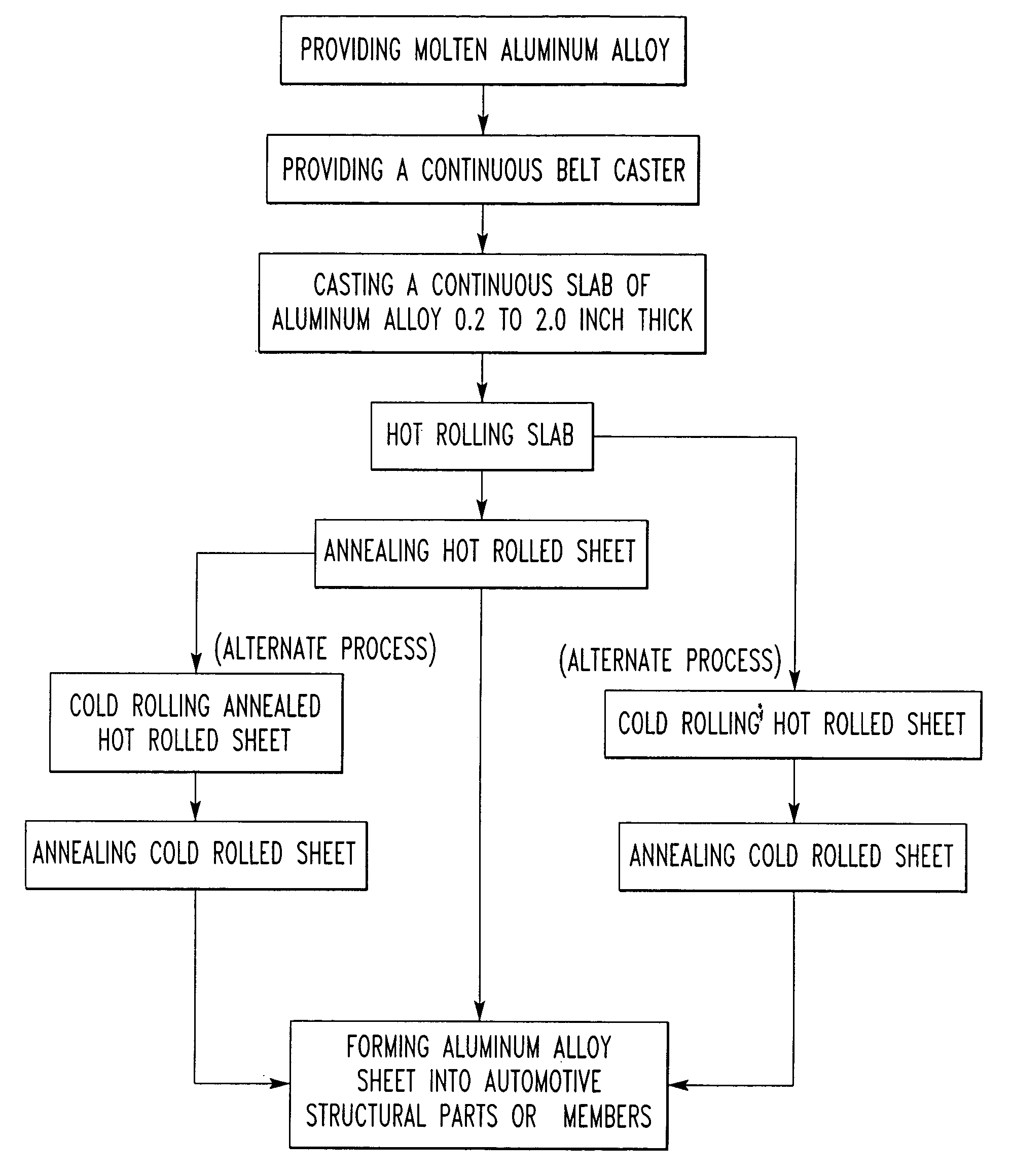Aluminum automotive structural members
a technology of automotive structural parts and alloys, applied in the direction of metal rolling arrangements, etc., can solve the problems of affecting the quality of automotive components, affecting the service life of vehicles, etc., and achieve the effect of low cos
- Summary
- Abstract
- Description
- Claims
- Application Information
AI Technical Summary
Benefits of technology
Problems solved by technology
Method used
Image
Examples
example
[0063] An aluminum base alloy containing 3.267 wt. % Mg, 0.201 wt. % of Mn, 0.080 wt. % Si, 0.164 wt. % Fe, 0.020 wt. % Cu, 0.004 wt. % Cr and 0.024 wt. % Zn, was fed to a twin belt caster at a temperature of 1260° F. and solidified to produce a 0.875 inch thick slab existing the caster at a temperature of 900° F. The slab was directly fed into a three stand hot rolling mills and rolled to final gauge of 0.100 inch. The temperature of introducing the slab to the hot rolling mill was at about 820° F. and the temperature of exiting the mill was at about 520° F. The hot rolled sheet was wound into a coil. The coil was annealed in an anneal furnace at a temperature of 730° F. for 4 hours. The annealed coil was tension leveled and slit into the required width and then the coil was given a surface pretreatment and lubricated. The material had properties in the rolling direction before forming into automotive parts of: ultimate tensile strength of 32.8 ksi, yield strength of 15.5 ksi, elon...
PUM
| Property | Measurement | Unit |
|---|---|---|
| wt. % | aaaaa | aaaaa |
| wt. % | aaaaa | aaaaa |
| temperature | aaaaa | aaaaa |
Abstract
Description
Claims
Application Information
 Login to View More
Login to View More - R&D
- Intellectual Property
- Life Sciences
- Materials
- Tech Scout
- Unparalleled Data Quality
- Higher Quality Content
- 60% Fewer Hallucinations
Browse by: Latest US Patents, China's latest patents, Technical Efficacy Thesaurus, Application Domain, Technology Topic, Popular Technical Reports.
© 2025 PatSnap. All rights reserved.Legal|Privacy policy|Modern Slavery Act Transparency Statement|Sitemap|About US| Contact US: help@patsnap.com



